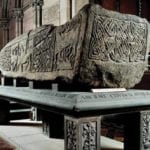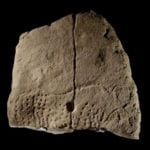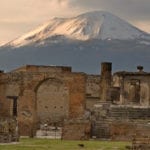 Miscellaneous
Miscellaneous  Miscellaneous
Miscellaneous  Our World
Our World 10 Green Practices That Actually Make a Difference
 Humans
Humans Ten Historic Men Who Deserve Way More Credit Than They Got
 Movies and TV
Movies and TV The 10 Most Heartwarming Moments in Pixar Films
 Travel
Travel Top 10 Religious Architectural Marvels
 Creepy
Creepy 10 Haunted Places in Alabama
 History
History Top 10 Tragic Facts about England’s 9 Days Queen
 Food
Food 10 Weird Foods Inspired by Your Favorite Movies
 Religion
Religion 10 Mind-Blowing Claims and Messages Hidden in the Bible Code
 Facts
Facts 10 Things You Never Knew about the History of Gambling
 Miscellaneous
Miscellaneous Ten Groundbreaking Tattoos with Fascinating Backstories
 Our World
Our World 10 Green Practices That Actually Make a Difference
 Humans
Humans Ten Historic Men Who Deserve Way More Credit Than They Got
Who's Behind Listverse?

Jamie Frater
Head Editor
Jamie founded Listverse due to an insatiable desire to share fascinating, obscure, and bizarre facts. He has been a guest speaker on numerous national radio and television stations and is a five time published author.
More About Us Movies and TV
Movies and TV The 10 Most Heartwarming Moments in Pixar Films
 Travel
Travel Top 10 Religious Architectural Marvels
 Creepy
Creepy 10 Haunted Places in Alabama
 History
History Top 10 Tragic Facts about England’s 9 Days Queen
 Food
Food 10 Weird Foods Inspired by Your Favorite Movies
 Religion
Religion 10 Mind-Blowing Claims and Messages Hidden in the Bible Code
 Facts
Facts 10 Things You Never Knew about the History of Gambling
10 Horrifying Archaeological Discoveries Of Human Sacrifice
Human sacrifices are a terrifying facet of our shared history. While most archaeologists would agree that human sacrificial practices were probably not as widespread as reported, they did (and do) still occur. Many sacrificial stories were propaganda made up by opposing states, but others were documented by the very people who carried out the rituals. Focusing on archaeological findings and the resulting inferences, let’s take a look 10 unsettling discoveries of human sacrifice.
10Mass Female Sacrifice In China
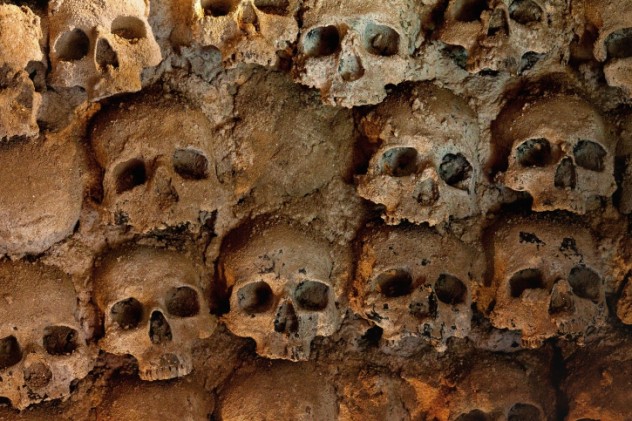
China’s Neolithic period lasted for 8,000 years, starting around 10,000 BC. This prehistoric era was distinguished by a move towards animal domestication (primarily pigs) and agriculture. Communities that were once nomadic hunter-gathers settled in one place and became farmers. Gorgeous painted pottery from this period, found along the Yellow River, is a landmark in China’s cultural and artistic development. The burial pottery was markedly different from that for every day use (although with multiple groups living near the Yellow and Yangtze Rivers, there certainly was not a homogenous cultural revolution occurring). The end of the Neolithic saw the development of larger stone cities and the domestication of more animals.
The largest of these cities was Shimao. Founded about 4,300 years ago, Shimao was only inhabited for 300 years. In the ruins of this ancient stone town, archaeologists made a grisly discovery of over 80 human skulls—with no bodies in sight. The skulls were all of young women who died around 4,000 years ago. Further examination of the skulls showed evidence of violent deaths involving blunt objects and fire. As to why so many young women were beheaded and buried in a mass grave, researchers believe that the girls were probably from enemy groups and sacrificed as part of ceremonies to mark the founding of the city.
9Viking Slaves

The Vikings may not have been as violent and savage as we often think, but the folklore surrounding their culture isn’t purely imaginative. In some ways the Vikings were extremely brutal—as they raided across Europe, Vikings would kidnap people from plundered villages and bring them as slaves to Scandinavia. Women were subjected to horrific abuse as sex slaves. If a female slave had children with her master, he could either claim them as his own or cast them out as another generation of slaves.
As if this wasn’t barbaric enough, the Vikings also sacrificed slaves to be buried with their masters. An archaeological excavation in Flakstad, Norway uncovered multiple graves and 10 bodies, some of which had been decapitated. After further examination, the archaeologists discovered that the people buried there had been slaves. The diets of the beheaded were also markedly different from those of the complete bodies. This evidence prompted researchers to hypothesize that the victims were slaves, beheaded as gifts for their dead masters.
8Sudan’s Oldest Sacrifice
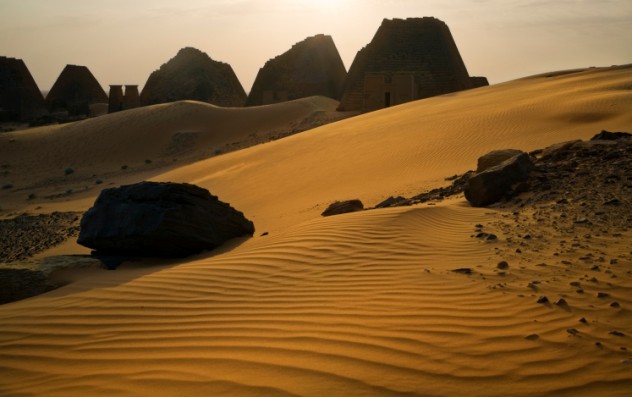
The Neolithic period was truly a turning point in human history and one of the cradles of this revolution was the Shendi region of the Sudan. Nestled on fertile lands next to the Nile River, the Neolithic period saw a wide variety of domesticated animals, used more for their milk and hair than for meat. Many communities in the area developed similar customs for burying their dead, such as including polished axes and stone rings as grave goods.
Less common were human sacrifices, but they still occurred. El Kadada village in the Nile Valley may contain the earliest evidence of human sacrifice in Africa. Uncovered by a team of French researchers, the tomb contained the corpses of two people, two goats, and a dog. The people, a man and a woman, were buried turned towards each other. The site is dated between 3,700 and 3,400 BC, nearly 2,000 years older than one of the next known sites of human sacrifice. That was near Mirgissa, an Egyptian city in modern Sudan, the burial location of decapitated sacrifices from around 1,800 BC.
7Moche Temple In Peru
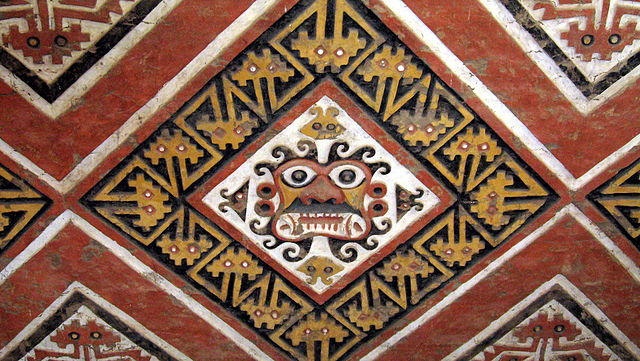
Prior to the Incas, the land of Peru was home to many other civilizations, including the sophisticated northern people known as the Moche. The Moche thrived between 100 and 800 AD. Priests and warriors stood atop the social hierarchy, with sweeping powers over the lower classes. A warlike society, the Moche considered religion and war intertwined. Warriors brought captives to adobe and brick temples, where priests oversaw their deaths. These sacrificial practices were widespread, with many murals portraying scenes of naked and tied up men being put to death.
One of the biggest ruins found to date is called Huacas de Moche, a large adobe-brick complex comprised of multiple platforms and temples. More and more sacrificed remains continue to be discovered there—currently around 70 victims have been found. Archaeologists believe that the victims were from distant lands, partly because of the lack of respect accorded to their corpses. Skulls were turned into cups and the bodies were put on display, with the blood being offered to the gods. Afterwards, the remaining body parts were swept into a ditch, where the vultures finished off what was left.
6Drugged Inca Children
The Incas left behind their own legacy, one that also involved human sacrifice. In their huge empire, stretching from central Chile to southern Colombia, children were the sacrificial preference. The Incas had a much shorter reign than their Moche predecessors, but their folklore has lasted through the ages.
So why did the Incas feel that they had to kill their children in order to appease the gods? The practice likely came about for a number of reasons. Their empire may have covered a large area and a huge variety of peoples, but the Incas themselves weren’t numerous (around 100,000 at any given time) and the land they lived on was unforgiving—boasting treacherous mountains, arid landscapes, and harsh winters. Combined with a multitude of nature disasters, it seemed to the Incas that only elaborate ceremonies (called capacocha) involving ritual sacrifice could keep their gods from destroying the entire civilization.
On Volcán Llullaillaco in Argentina, the mummified bodies of three Inca children were discovered; the well-preserved remains telling of a gruesome sacrificial rite. The oldest of the three is estimated to have been only 13 when she died, archaeologists have named her the Llullaillaco Maiden. After being chosen for sacrifice, the Maiden lived the last year of her life embroiled in the ceremonies that would lead up to her eventual death. She was fed the kind of food that elite members of society ate, but she was also taking coca and drinking large amounts of alcohol. The most coca consumption occurred a year before she died, then again six months later, and then right before she died. Researchers believe the children were drugged to sedate them—unlike other rituals, which were often violent in nature, the Maiden and her companions seem to have been sacrificed without physical brutality.
5Infant Jar Burials

Buried jars containing the remains of infants have been found all over the world and date from multiple time periods. It’s a long-lasting burial custom that spans from the Neolithic to some modern-day parts of Africa. That’s in no way saying that those are all sacrifices—the burial practice has a long and complex history. A lasting metaphor is the jar as womb, evidenced both in modern ethnographies and early pottery shapes. But in the case of some Neolithic cultures, archaeologists believe that these type of burials were sacrifices.
There were strict rules guarding the rituals of infant jar burial, and such highly regulated death rites suggest that the tradition probably derived from sacrificial practices in prehistory. Burials from the Iron Age show sacrifices as an attempt to prevent and control natural disasters and African ethnography consistently shows a fear of drought. Not all these burials were sacrificial, but those infants that were purposely killed were part of intricate customs meant to control natural disasters.
4Minoans
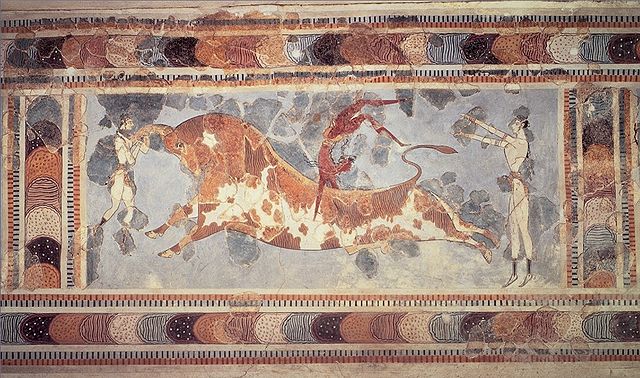
The Minoans were a civilization in Crete, off the coast of Greece, active in the Bronze Age from around 3000 to 1100 BC. Often considered Europe’s earliest advanced culture, their written language, known as Linear A, has yet to be deciphered by researchers. Though the culture went into a steep decline after a civilization-shattering volcanic eruption destroyed much of Crete, archaeologists believe that the Minoans were an intelligent and powerful people with advanced technologies and a high level of gender equality.
But even the most peaceful culture can have brutal practices. At the significant Minoan settlement of Knossos, there is evidence of child sacrifice and cannibalism. Religious paintings (important, since we can’t decipher the writing) depict religious ceremonies, including human sacrifices offered to the gods on altars. When one Minoan home was excavated, archaeologists found a mass sacrificial burial of children. Their flesh had been stripped away, perhaps due to cannibalism. Other evidence points to the existence of crisis cults that sprung up when the society began to crumble. These cults may have intensified the normal ritual behavior (which probably involved infrequent sacrifices) and performed more and more human sacrifices as an anxiety-ridden response to major disasters.
3British Sacrifice
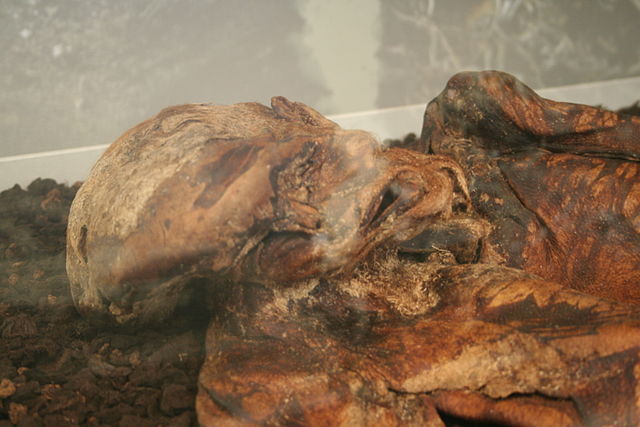
A diverse and fractured people, the Celts came into Britain with some particularly interesting religious beliefs around 700 BC. The British Celts, it is important to emphasize, were not one culture. In fact, “Celts” was a label slapped onto the early Britons in the 18th century as a way to group a wide variety of peoples with loosely similar cultures, languages, and religions. That being said, the “Celts” did usually practice human sacrifice. The Romans, a culture not well known for their squeamishness, were supposedly shocked by these ritual killings.
Many bodies preserved in European bogs were murder victims (Listverse has previously covered some awful bog body deaths). One of the most famous bodies ever found was a man dubbed Fissured Fred. Excavated in 1981, Fred was discovered alongside tools and weaponry. He had suffered a severe blow from a sword to the back of the head head some 2,500 years ago. While it chipped his skull, the hit wouldn’t have been enough to kill him. Exactly what happened to him next remains a mystery, since most of his body has yet to be found. However, due to the context of his burial and the items discarded next to him, he was likely brutally sacrificed.
2Pyramids

We all know about Ancient Egypt—or at least we think we do—mummified remains, elaborate pyramid tombs, and the Great Sphinx of Giza. What you may not know is that human sacrifice was not an uncommon practice in Egypt, with retainer sacrifice being particularly popular. Retainer sacrifice is ritualized killing following the death of a ruler, in order to facilitate other people accompanying him or her to the afterlife. The earliest evidence of this practice in Egypt comes from between 3500 to 3200 BC.
One of the most interesting theories distinguishing between retainer sacrifices and ritual sacrifices asks whether retainer sacrifices were equated with grave goods (all the stuff that gets purposefully buried alongside a deceased individual). Perhaps the two kinds of sacrifice intertwined.
For Egypt, the practice ebbed and flowed, but during the First Dynasty, sacrifices were all the rage. External trauma is not evident in many sacrificed remains, probably to avoid the loss of blood (which was seen as mutilation and not for those high in society), and it’s unclear whether the victims were coerced, willing, or a mixture of both. Prisoners of war also seem to have been sacrificed. The tomb of King Aha, who ruled during the First Dynasty, contained 36 additional burials. All of those entombed were young men (the oldest was in his early 20s) and they all died at the same time of strangulation.
1Uganda’s Modern Sacrifices
Human sacrifice sounds like something only ancient cultures did long ago. Besides the occasional twisted individual, you must be thinking (or hoping) that ritual human murder is relegated to the history books. The truth is, it still exists, and the last item on this list isn’t an archaeological find. Between 2009 and 2010, the news caught whiff of stories coming from Uganda of ritual murders and child sacrifice. Witch-doctors have been called out for their role in the bloody practice that has apparently been on the rise. As to why there has been a recent spate of child sacrifice? It’s complicated. Some believe that a collection of films out of Nigeria were encouraging people to sacrifice children. The films depict families getting rich after performing a human sacrifice. Another factor may be a response to a sense of impending disaster. In this case, the looming crisis is famine.
Many of the children who are killed have been kidnapped and are strangers to the killers. Survivors of these attempts are few and far between, but a little three-year-old named Mukisa made it and was able to identify the men who took him. When he first escaped the attempted kidnap, his penis was cut off by wannabe abductors. Anti-sacrifice activists have been working to turn witch-doctors away from supporting child sacrifice, setting alight sacrificial shrines as they work for change in Uganda. Witch-doctors are coming out of the woodwork and some claim to be changing their ways. One former witch-doctor who participated in many sacrificial rituals is campaigning to end the practice, although in the past he sacrificed at least 70 people, including his own 10-year-old son.
Kristance is a freelance travel writer, editor and researcher. When she’s not compulsively traveling the globe, she’s looking up weird facts and making awkward YouTube videos. An avid culture geek, she’s a trained anthropologist and archaeologist. Connect with her on Twitter, read about her adventures at diggingtoroam.com or have a laugh at her gif-filled tumblr.

